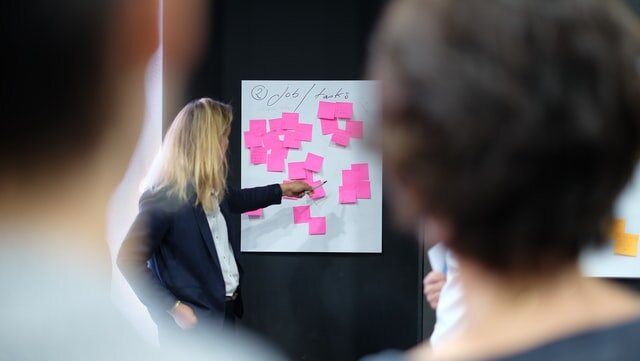What is the future of work?
The lockdown enforced the adoption of digital technologies and impacted multiple aspects of modern life; most importantly the ways of working. It is now proven that at least knowledge workers can work from anywhere - online teams can collaborate efficiently across a range of activities, tasks, and projects. Assuming the right setup is there —technology along with a good team culture and communication practices — the actual work can be done at least as effectively as with the ‘on-premise model’.
People often praise ‘remote work’ for allowing them to better focus on complex tasks by avoiding the noise and ‘randomization’ of the open-plan office space. At the same time, remote workers save commute time, which, in theory, can be used for personal activities and thus improve people’s work-life balance, well-being, and general quality of life. Even the most conservative business leaders start to realize that a distributed, online workforce is both feasible and appealing: beyond the benefits of fewer buildings to operate, lower operating expenses per employee, and, hopefully, more satisfied workers, this model allows companies to recruit talent literally from anywhere on the planet.
The future is hybrid: a distributed workforce with frequent offline events
The ‘remote work’ model at scale introduces plenty of efficiencies. However, it comes with an important limitation regarding the human connection: People in a physical office space not only collaborate - but they also develop their business relationships; they build trust and establish stronger links at the human level -- and this is difficult to replicate in an online setup. In a co-location scenario, employees can easily demonstrate empathy and connect with others — not only according to their business roles but also based on personal stories, interests, and the multiple facets of their personality.
→ Check also: Building an MVP: How to define the first instance of your product
Consequently, companies offering the option of ‘remote work’, will soon face an additional challenge: the development and reinforcement of a strong team and corporate culture. When a significant percentage of employees work remotely, the corporate HQ as a symbol and a reflection of the corporate culture loses its power; the branding and cultural elements embedded into the typical corporate office space become less effective. Additionally, developing and maintaining a mentality of a ‘single team’ is harder with a remote or mixed workforce.
Companies that take the ‘remote work’ perspective seriously, will have to optimize both their online collaboration paradigm and, at the same time, their offline communication patterns. The former is about improving the remote collaboration experience and also about finding new means of promoting corporate and team values to the workforce – through new symbols, digital tools, communication protocols, business routines, and ceremonies; it is about inheriting a new leadership style.
The latter – offline communication patterns - is about re-purposing existing corporate office space and buildings to encourage regular face-to-face business meetings and events. For example, remote workers and teams should be able to meet and use corporate facilities on demand. In parallel, there should be a well-designed yearly plan of physical meetings, events, and conferences, optimized to better connect the geographically distributed, online workforce.
Corporate HQs in the era of remote work will become less important
Companies that adopt the ‘remote work’ approach will eventually end up having a scattered workforce - across geographies and time zones – which makes the ‘classic’ corporate HQ less important. Organizations that allow a significant percentage of employees in a remote/flexible mode will have to inherit a different strategy of corporate presence: a network of small and flexible offices, a group of corporate ‘base stations’ or ‘hubs’ — offering core services and collaboration facilities to all employees, in a dynamic, adaptive way.
A decentralized equivalent of the corporate HQ with increased geographical coverage but only limited total capacity — capable of hosting concurrently just a fraction of the workforce of the organization.
In this network, each office ‘hub’ hosts specific teams that need to be collocated (functions like logistics, manufacturing, etc.). The ‘hub’ has a multi-purpose design with adjustable collaboration spaces, a ‘hot desk’ arrangement, and specially designed features to support a number of standardized business events – the ones that benefit from the physical presence of teams (e.g., brainstorming sessions, demos, and presentations with a live audience, prototyping workshops, conferences). This allows the support of ad-hoc requests from remote workers and teams – just-in-time, in the context of a project or initiative.
Following this approach, employees are empowered to self-organize and utilize the corporate space as needed -- for instance, to host a physical or hybrid meeting whenever they want: A team of remote collaborators that sees value in face-to-face brainstorming, would simply book the space (using utilities integrated into the digital collaboration platform) in the nearest available ‘hub office’ and leverage the latest tools, services and all the special facilities offered. Similarly, entire teams could host their all-hands events, in a ‘physical mode’, at a specific corporate ‘hub’.
This network of corporate ‘hubs’ can be further extended and enhanced by leveraging 3rd party co-working spaces and business facilities. Following this approach corporations would be able to maintain a minimum of building facilities while ensuring the ability to quickly scale their capacity according to the actual demand from their workforce.
The lockdown period forced companies, the workforce, and society to try the work-from-home, or better, the work-from-anywhere model. Location and strict work schedules are proved to be less relevant and, in many cases, indifferent. The real success factor for the corporation of the future is its ability to attract and retain global talent – to inspire people to work towards a clear, bold purpose; from anywhere. In this new era of the ‘online workforce’, corporate office space is becoming a scalable, adaptive service.
Check also: our unique Innovation Toolkit - a collection of seven innovation templates that empower teams to frame problems, shape ideas, run hackathons, and more.
Also published on the InnovationLeader.com





The ability to quickly test ideas via functional prototypes can boost innovation performance. In this article we present a practical guide on how to achieve an increased level of prototyping readiness.